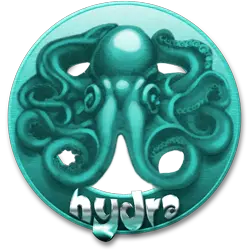
Exploring the Legacy of Avatar: Elemental Saga
“Avatar: The Last Airbender” is an engaging TV show created by Michael Dante DiMartino and Bryan Konietzko. It first aired in 2005 on Nickelodeon. The story unfolds in a world where people can control elements: water, earth, fire, or air. It follows Aang, a young Airbender, who is the Avatar. His role is to keep peace among the four nations. With his friends, Aang embarks on a quest to master all the elements. The show is loved for its exciting adventures, deep characters, and rich settings. It became popular with viewers of all ages, earning praise for its creative storytelling.

The Rich Tapestry of the Four Nations
The world of “Avatar: The Last Airbender” is a mix of unique cultures, beautiful landscapes, and powerful bending styles.
Water Tribes: The Water Tribes live in the icy regions, in the north and south. Their culture is close-knit and family-focused. They are skilled in Waterbending, using fluid and graceful movements to control water in all its forms.
Earth Kingdom: The vast Earth Kingdom boasts diverse landscapes, from mountains to forests. Its people are known for their strength and endurance. Earthbenders move rocks and soil, standing firm and steady like the earth they control.
Fire Nation: The Fire Nation is on islands of volcanoes and has a warm climate. Its people are fierce and driven, known for their advanced technology. Firebenders use dynamic and intense moves, creating and controlling fire with power and precision.
Air Nomads: The Air Nomads lived in temples high in the mountains, valuing peace and freedom. Their culture was spiritual, with a deep connection to nature. Airbenders are agile and quick, using swift movements to control the air around them.
Each nation’s culture and landscape shape its bending style, making the world of Avatar rich and fascinating.
Characters and Character Development
“Avatar: The Last Airbender” has memorable characters, each with unique journeys.

Aang: Aang is the last Airbender and the Avatar, meant to bring balance. He’s kind and fun-loving but carries the weight of his duties. His journey is about mastering all elements and facing his role as the Avatar.
Katara: Katara is a Waterbender from the Southern Water Tribe. She’s caring and strong-willed. Her journey involves growing in her bending skills and becoming a powerful Waterbender, all while supporting Aang.
Sokka: Sokka is Katara’s brother. He’s witty and resourceful, without bending abilities. His journey is about using his cleverness and bravery to help his friends and prove his leadership skills.
Toph: Toph is a talented Earthbender, despite being blind. She’s tough and independent. Her journey is about gaining freedom from her protective family and teaching Aang the ways of Earthbending.
Zuko: Zuko is the prince of the Fire Nation, initially Aang’s enemy. He’s intense and conflicted. His journey is about finding his true path and understanding himself, beyond the expectations of others.
Iroh: Iroh is Zuko’s wise and loving uncle. He’s a former Fire Nation general who turned peaceful. His journey is about guiding Zuko and others, sharing his wisdom and care.
Together, their journeys are about growth, understanding, and unity, making the story rich and heartwarming.
Themes and Symbolism
“Avatar: The Last Airbender” dives deep into themes like balance, identity, and redemption, making it a rich and thoughtful show.
Balance: The show often explores balance, especially between the four elements and the nations. Aang’s mission as the Avatar is to maintain this balance. The story shows how imbalance leads to chaos, stressing the need for harmony in the world and within ourselves.
Identity: Many characters in “Avatar” go on a journey to discover who they are. Aang struggles with his identity as a carefree kid versus his role as the Avatar. Zuko faces a tough path finding his true self apart from his father’s harsh expectations. This theme shows that understanding and accepting oneself is key to growth.
Redemption: Redemption is a powerful theme, especially in Zuko’s story. He starts off lost, following a path of anger and mistakes. But he learns, changes, and seeks to make things right. His journey shows that it’s never too late to change and that forgiveness and understanding can heal wounds.
Through these themes, “Avatar” teaches valuable lessons about life, making it a show that touches hearts and minds.
Bending: More Than Just Magic
Bending in “Avatar: The Last Airbender” is not just a power but a deep part of the show’s cultures and spirituality.
How Bending Works: In the world of Avatar, bending is the ability to control an element: water, earth, fire, or air. Each type of bending has its own style, often linked to different forms of martial arts. Benders connect with their element through movements, balance, and a strong will.
Connection to Culture: Each nation’s culture is closely tied to its bending element. For example, the Water Tribes’ focus on community reflects the flow and adaptability of water. The Earth Kingdom’s solid and enduring nature mirrors earthbending. These connections show how deeply bending is woven into the people’s way of life.
Connection to Spirituality: Bending also has a spiritual side. It’s about understanding oneself and one’s element. Aang’s journey as the Avatar is deeply spiritual, learning not just to bend the elements, but also to find balance within himself and the world. The show often links bending to themes of harmony, respect for nature, and personal growth.
Bending, in “Avatar,” is more than just a power. It’s a rich blend of culture, spirituality, and identity, adding depth and meaning to the story and its characters.
Denouement
“Avatar: The Last Airbender” stands out as more than a children’s show. It offers depth, engaging storytelling, and cultural richness that appeals to all ages.
Depth: The show dives into themes like balance, identity, and redemption. These themes are woven into every episode, making viewers think and feel deeply. The characters’ struggles and growth add layers of meaning, showing life’s complexities in a way that’s both gentle and powerful.
Storytelling: “Avatar” tells a compelling story with a world that’s fully imagined. Its plot is rich with adventures, mysteries, and lessons. The storytelling is careful and deliberate, with each episode adding to the larger tale. The show’s creators built a world that feels real and full of history.
Cultural Significance: The show blends elements from different cultures, especially in its bending styles and philosophies. This blend creates a world that’s diverse and respectful of various traditions. It invites viewers to learn and appreciate cultures not their own. “Avatar” also broke ground in animation, showing that animated shows can be deeply meaningful and beautifully crafted.
In all, “Avatar: The Last Airbender” is a masterpiece of storytelling. It’s a show that teaches, entertains, and inspires, making it a treasure for viewers of all ages.










